|
THOMAS HART - GEORGE WASHINGTON ESQ.
|
General & Commander
and Chief of the
Continental Army of
America |

Thomas Hart, Public
domain, Mount Vernon
Collections
1775-1780 |
- The name of the publisher, Thomas Hart, is associated
with a series of fictitious portraits of 10 American leaders.
- None of them seem to look like what we're accustomed to
seeing the subject look like, in fact, they look very
different.
-
Printed in ink below the image: Done from an Original, Drawn from the Life by Alex. Campbell, of Williamsburg in Virginia.
|
We the People of the United States, in Order to form a more perfect Union,
establish Justice, insure domestic Tranquility, provide for the common
defense, promote the general Welfare, and secure the Blessings of Liberty to
ourselves and our Posterity, do ordain and establish this Constitution for the
United States of America.
(Preamble to the United States Constitution)
|

Alexander Campbell, Public
domain, Mount Vernon
Collections
September 9,
1775 |
- George Washington (1732-1799) was born on February 22,
1732, which was February 11, 1731, on the O.S. calendar.
-
He was a Founding Father and the first president of the United States, serving from 1789 to 1797.
|
Old Style (O.S.) and New Style (N.S.) indicate dating systems before and after a calendar change, respectively. Usually, they refer to the change from the Julian calendar to the Gregorian calendar as enacted in various European countries between 1582 and 1923.
(Wikipedia)
|

Gilbert Staurt,
Public domain, via
Wikimedia Commons
Williamstown Portrait of George Washington
1803 |
- Appointed as commander of the Continental Army in 1776, Washington led Patriot forces to victory in the American Revolutionary War against the British Empire.
- To meet public demand for images of the American generals at the outset of the Revolution, publishers in England produced imagined likenesses of them in advance of receiving accurate ones.
 |
|
|
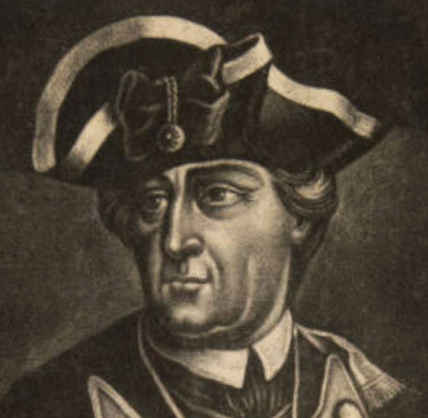 |
|
Major General
Charles Lee |
George Washington |
- Washington and General Charles Lee (1758-1815) had a
contentious relationship in real life, however, they look
remarkably similar in these fictitious portraits.
- Charles Lee was
Attorney General under Washington and John Adams, and a close personal friend of Washington as well.
- On January 10th, 1780, Major General Charles Lee’s commission was terminated by Congress.
- This dismissal came on the heels of a court martial for Lee’s actions during and after the Battle of Monmouth in June of 1778.
- Washington had hired Baron von Steuben to plan military
strategy and he was unhappy that Lee had ordered the troops to
retreat.
|
Great Fire
of 1776 |
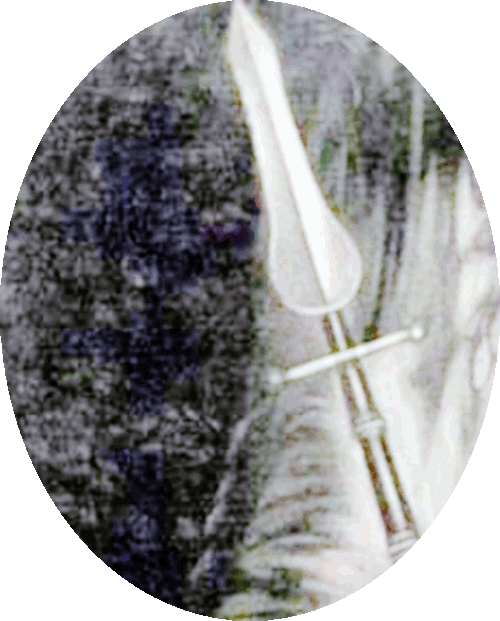
Occupation |
- By the time the Revolutionary War broke out in 1775, the city of New York had developed into a hub of trade and commerce.
- There was political division with growing animosity between Loyalists and Patriots
in the Province of New York.
- The Continental Army under General George Washington occupied the city in early 1776, but British General William Howe recognized the strategic value of the city’s harbor.
- In early summer 1776, Howe launched a campaign by occupying Staten Island.
|
But for almost 250 years, most New York City historians either ignored the Great Fire of 1776 or argued for its unimportance. They assumed that the fire was caused either by accident or by apolitical miscreants, and they chose to diminish the reports of outraged eyewitnesses who believed the fire was deliberate. (gothamcenter.org)
|
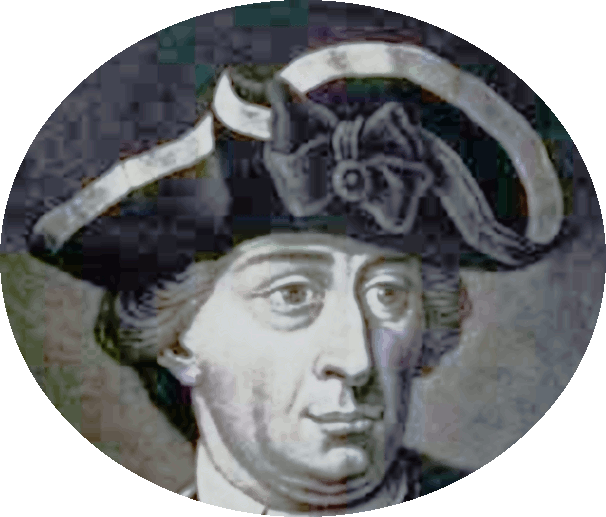
Commander |
-
Five days after the Continental Army’s defeat at the Battle of Long Island on August 22,
1776, the British invaded Manhattan .
- The British forces, commanded by Howe, included Hessian mercenaries
and these soldiers came from various German states, with the majority originating from Hesse-Kassel.
-
Howe brought 32,000 British regulars, 10 ships of line, 170 transports, and 20 frigates, ultimately defeating Washington’s troops again at Kip’s Bay.

Richard Purcell aka Charles Corbutt (ca 1736-ca 1766), Public domain, via Wikimedia Commons
General William
Howe |
- On August 27, 1776, British troops under General William Howe
(1729-1814) attacked American forces commanded by George Washington in the Battle of Brooklyn.
- Assailed from three sides, Washington and the main body of the Americans escaped across the East River to Manhattan and then fled north, ultimately crossing the Hudson River, then known as the North River, to New Jersey.
- If Washington and his troops had been captured either in Brooklyn or Manhattan, the American Revolution would
likely have ended soon after it began.
|
A talented and experienced soldier from a family that produced many talented and experienced soldiers, William Howe nonetheless became the scapegoat for the British failure to crush the American Revolution early on. In spite of several crushing victories over General George Washington on the battlefield, Howe’s inability to capture him or completely destroy the Continental Army as a fighting force ultimately led to France’s entry into the war and Britain’s ultimate defeat. (battlefields.org)
|

General Howe |
- There is another story about Washington calling a truce
in the later Battle of Germantown in Pennyslvania after
General Howe's terrier dog ran across the battlefield.
-
Washington was encamped at Pennibecker's Mill on October 6, 1777,
and the dog was seen wandering between the British and
American battlelines.
- Washington had the dog brought to
his tent and had him fed, bathed and brushed.
- Then he
called a cease fire while one of his aides delivered the dog
to Howe under a flag of truce.
- Some claim it's because Howe was a Freemason and
Washington was acknowledging that he was his brother.
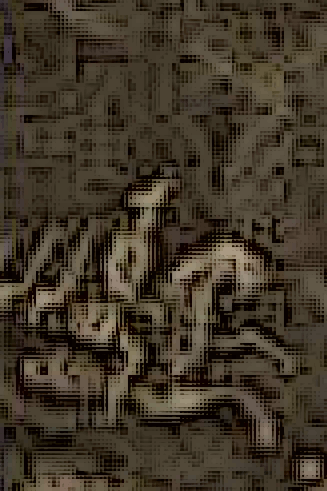
Continental forces |
-
Meanwhile, General George Washington recognized the inevitability of the capture of New York City, and withdrew the bulk of his army about 10 miles north to Harlem Heights.
-
Howe then defeated the Continental forces on Long Island in August and on September 16, 1776, British troops marched into Manhattan, beginning a
7-year occupation.
- With the withdrawal of the Continental Army to Harlem Heights, a mass exodus of civilians began.
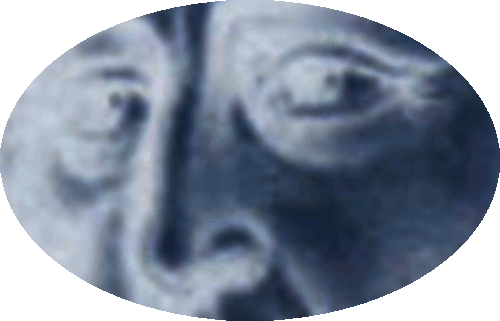
Continental farce? |
-
By the night of the fire, New York was very nearly a ghost town.
- As much as 80 percent of the city’s population including
most of the city’s fire fighters had fled, leaving perhaps 5,000 in a city that
was normally populated by 25,000.
- Every house was equipped with a
'Leather Buckett' to fetch water and the men would form a
bucket brigade to pass the water, but there were not enough
citizens left in town to pass the buckets.

Thomas Hart, Public domain, via Wikimedia Commons
John Hancock 1776
Wearing Geo
Washington's wig |
- After the Battle of Brooklyn, Washington wrote John Hancock (1737-1793), President of the Second Continental Congress, sounding him out on the idea of burning the city on the southern tip of Manhattan Island to deny the British winter quarters.
- From Philadelphia, Hancock responded that the
Continental Congress, meetings as a Committee of the whole
house, decided, “that no Damage should be done to the City of
New York.”
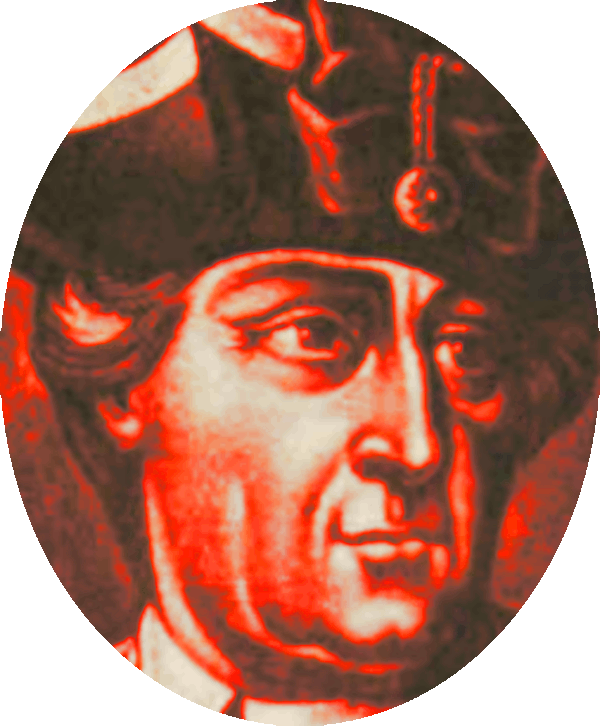
rebel army |
- The unruly rebel army under Washington’s command repeatedly threatened to burn the city rather than let it fall into the hands of the British.
- In August, after the patriot’s defeat at the Battle of Brooklyn, Washington makes a miraculous escape with his army across the East River to Manhattan.
- The British captured New York City, and then much of it mysteriously burned to the ground
a few days later.
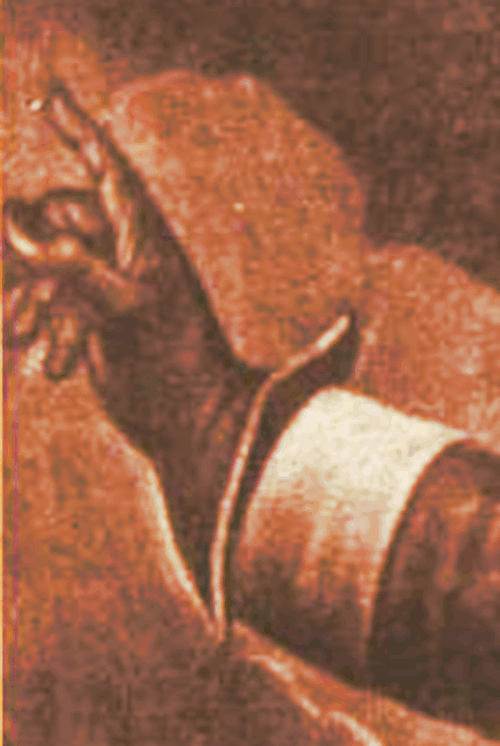
New York fire |
- On September 20, 1776, five days after the occupation of
the city by British forces, a fatal fire broke out.
- Not
quite September 11 but it was 92.
- Brigade Major Frederick Mackenzie was stationed outside the commercial center of the city
and saw an 'immense column of fire and smoke.'
- He hastily ran the
2 miles into town, where the fire, spread by a strong southerly wind, was already out of control.
- Mackenzie described women and children burned out of their
houses, who moved to multiple locations and were burned out of
each one.
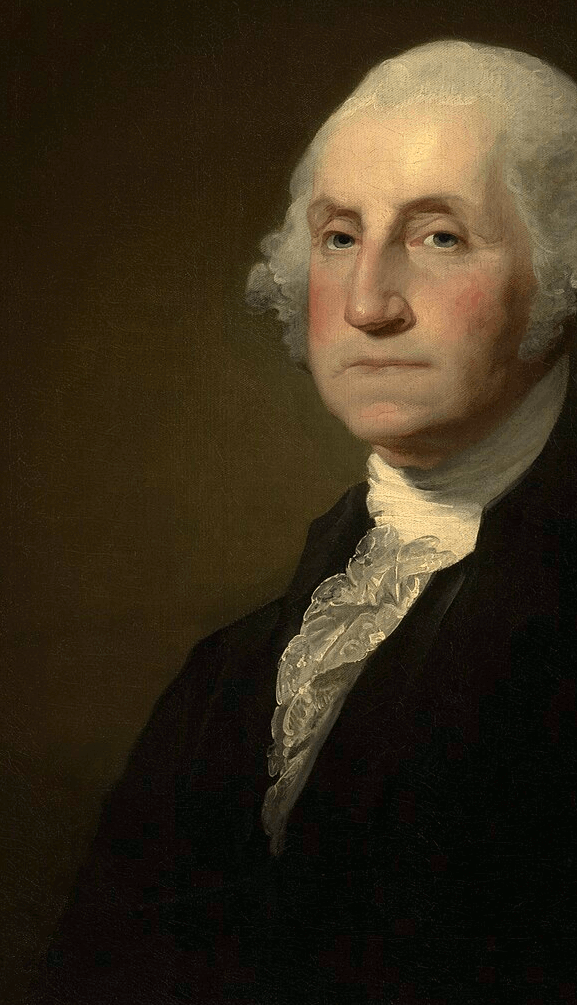
Catbird seat |
- Meanwhile, Washington’s choice of the Morris mansion as his headquarters was no accident
because it stands on one of highest points in Manhattan and he
watched the city burning from the estate’s grounds.
|
Benjamin Carp,
author of The Great New York Fire of 1776 (Yale University Press, 2023), believes it
was George Washington who ordered New York City burned to the ground as his troops
retreated despite the Continental Congress denying him authorization.
As evidence of arson, Carp identifies more than 15 distinct ignition points that were reported by witnesses.
(Alan Singer)
|

New York destroyed |
- The weather had been dry with high winds, so the fire quickly spread among tightly packed homes and businesses.
- It continued into the daylight hours on September 21, and burned most of the city between Broadway and the Hudson River
and at least a quarter of the city was destroyed.
-
The fire cast such a huge glow that it could be seen in New Haven, Connecticut, 70 miles away.
-
It took out the West Side of what then constituted New York City at the southern end of the island of Manhattan.
- Most buildings were constructed of wood with roofs of wood shingles.
|
Because of fire risks, New York’s Provincial government had required that by January 1766 new structures were to be built in brick and roofs made of tile or slate. The regulations were ignored because of cost and the scarcity of materials.
(newyorkalmanack.com)
|
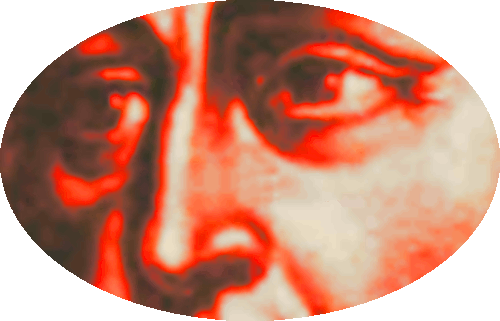
Chief fireman |
- The history of the Great Fire in the 19th-century and
beyond owed a great deal to a German-born tavernkeeper and
merchant named David Grim.
-- Grim lived in New York City as a Loyalist throughout the British occupation and he almost certainly knew
the men who fought the fire and later testified.

Eyewitness |
- The eyewitness estimates, probably reported many years later
by the proprietor of Hessian’s Coffee House, Grim,
ranged from as little as the 493 houses to the 1,000 spoken of the next day by the chaplain of the British fleet, Thomas O’Beirne, in a sermon at St. Paul’s which had survived the fire.
- With a high estimate
from New York journalist Hugh Gaines of as many as 1,500 buildings which was claimed by a Loyalist in a letter from New York dated September 23, 1776.
|
Watson used Grim’s account to exonerate the Americans from the British accusation that Washington’s men had committed an act of incendiarism. The Great Fire of 1776, he wrote, “excited a fear at the time, that the ‘American
rebels’ had purposed to oust them, by their own sacrifices, like another Moscow. It is however believed to have occurred solely from accident.”
(gothamcenter.org)
|
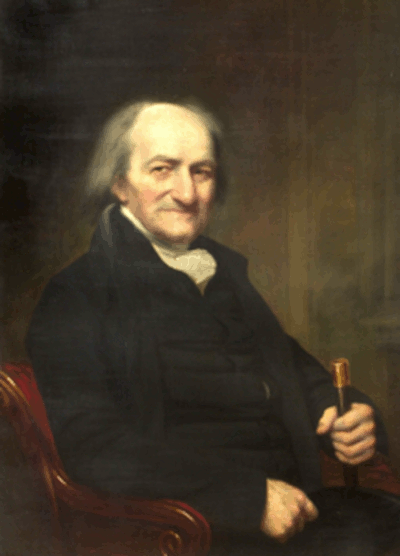
The Gotham Center for New York City History
David Grim |
- He also hinted that the British troops arrested many a
'suspicious person,' but then released most of them; he made the troops sound quick to judge but devoid of proof.
-
Grim diminished the credibility of the British troops and the Loyalist eyewitnesses, who in their reports universally accused the
rebels of having set the fire.
- To the Americans they were Patriots, to the British they
were rebels.
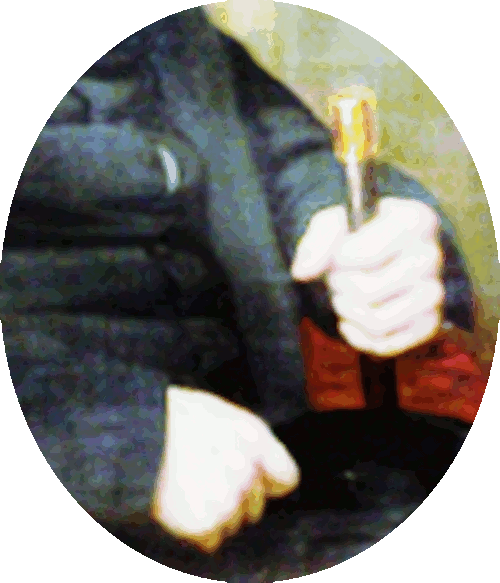
Chief witness |
- Many historians felt that Grim's estimates of 493 homes
and Hugh Gaines estimate of 1/6 of the city, were more than
likely the most credible.
- This is due to overexaggeration by
many and in the ensuing centuries, scholars dismissed and discounted
eyewitness sources due to their perceived bias or hysteria.
- These scholars concluded that Grim (and sometimes only Grim) was objective enough to be credible.
|
Grim must have been shaken by the implication that his citizenship was contingent on his political beliefs. And so he left, as part of his legacy, an account of the Great Fire that was closer to Hobart’s propaganda than Dash’s testimony. Was it the truth, or was it Grim’s way of leaving his Loyalist past behind him? Had Grim spun a fairy tale?
(gothamcenter.org)
|

Trinity Church when
rebuilt
November
3, 1842 |
- Grim’s remembrance never
directly claimed that the fire was an accident, but unlike the
firefighter John Baltus Dash's testimony of 2 separate fires,
it gave the fire a single point of origin
as a Whitehall Slip tavern, which 'was then occupied by a
number of men and women, of a bad character.'
- He also
drew a map that has been used throughout the years that showed the
fire as one contiguous pattern, with no indication of the
suspicious combustibles that were found elsewhere in the city.
- But rather, the map indicates that the fire spread
naturally.
|
Grim died in 1826, but his reminiscences were discovered by the banker-historian John Fanning Watson during a visit to New York in 1828. From there, Grim’s tale became a staple: it propagated, through paraphrase and repeated reprintings, in at least twenty historical works over the course of the 19th century. Plenty of other histories ignored the fire entirely. The myth of an accidental fire took hold and became entrenched.
(gothamcenter.org)
|
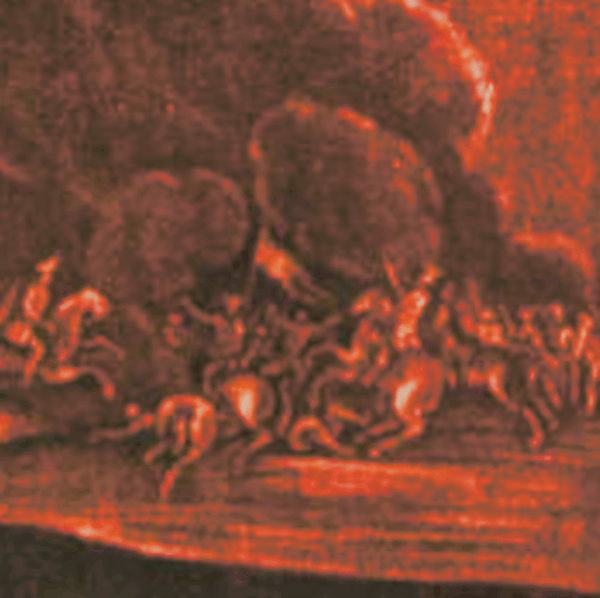
Patriots |
- As the cause of the fire was not known, the blame game started almost immediately.
- General Washington denied that his troops were responsible, but the British blamed
rebels who had remained hidden in Manhattan.
- Some believed that hostile British soldiers had started the fire so they could accuse the retreating Patriots.
-
It had become a badge of patriotism to deny that rebels had deliberately burned New York City
and Americans much preferred the idea that they had fought a righteous war and that their enemies were responsible for most of the atrocities.
|
“If we should be obliged to abandon this town, ought it to stand as winter quarters for the enemy?” he asked John Hancock, the Congress’ president.
(Erik Ofgang)
|
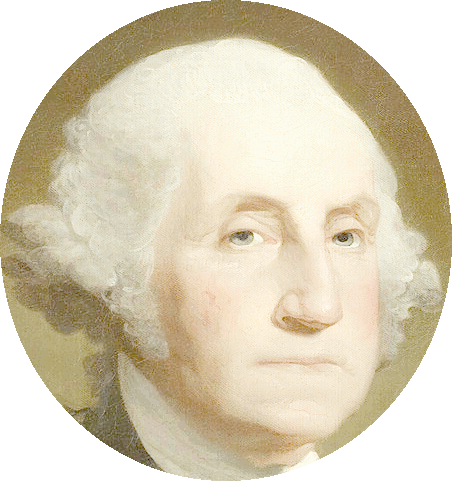
Accused |
-
Many residents assumed that one side or the other had started it.
- Acting as fire fighters, British soldiers discovered that much of the equipment had been sabotaged.
- They accused the locals, arresting over 200 suspects, although no official charges were filed against any of the accused.
|
A new book points out that the general was happy when the city burned and expressed regret that more of it was not destroyed during the fire.
(Erik Ofgang)
|
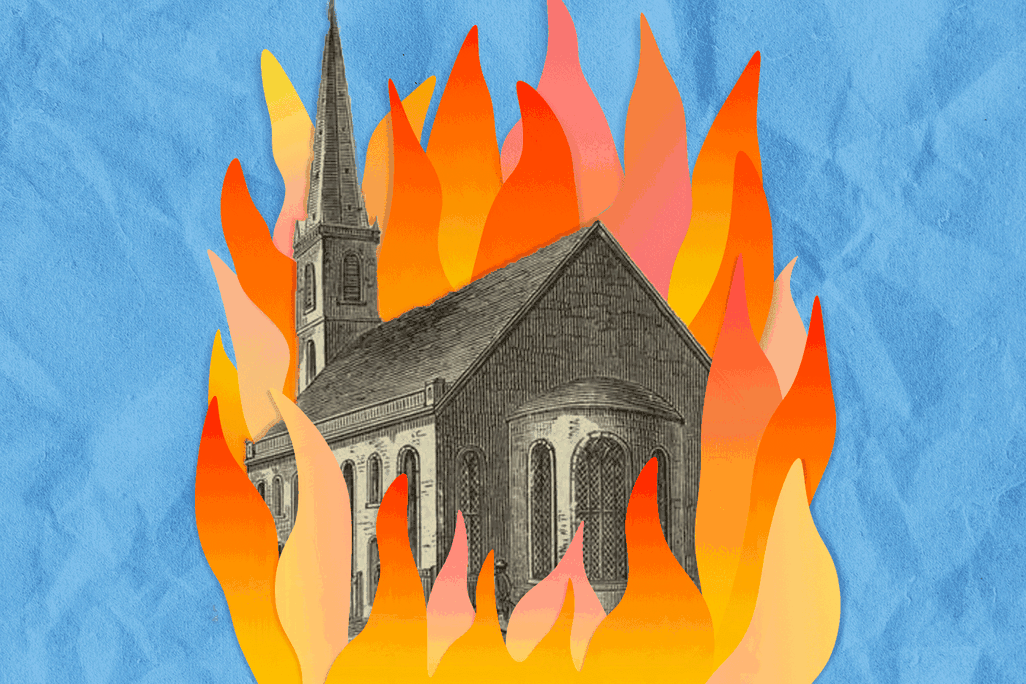
Illustration by Meilan Solly / Photos via New York Public Library, Freepik
Villainous act? |
- William Tryon wrote a his letter to Lord Germain dated September
24 , 1776.
- So the question many are asking is did George Washington
order rebels to burn New York City in 1776?
- Washington knew his army couldn’t hold the city against the world’s greatest navy, but as he prepared to retreat, he hoped to deny the British harbor through a strategy nearly as old as warfare itself: a scorched-earth policy.
|
Many circumstances lead to conjecture that Mr Washington was privy to this villainous act as he sent all the bells of the churches out of town under pretence of casting them into cannon, whereas it is much more probable to prevent the alarm being given by ringing of the bells before the fire should get a head beyond the reach of engines and buckets. Besides, some officers of his army were found concealed in the city supposed for this devilish purpose.
(Davies, Documents of the American Revolution)
|

Nathan Hale |
-
Coincidentally, Nathan Hale, an American captain engaged in spying for Washington, was arrested in Queens the day the fire started.
- Hale's arrest linked him circumstantially to the fire, especially in the eyes of the public.
- Still, the rumors attempting to link him to the fires have never been substantiated; nothing indicates that he was arrested (or eventually hanged) for anything other than espionage.
- Some suspected that Nathan Hale, who was executed the day after the fire as an American spy, may have been involved in the plot to burn the city, denying the British a base for the upcoming winter.
|
A letter sent from New York to London newspapers accused the
rebels of
“having placed a large Quantity of Combustibles in the Cellars of several Houses in that Part of the Town called Whitehall” and claimed “William Smith, an Officer in a New England Regiment was taken with a Match in his Hand, and sacrificed on the Spot to the Fury of the Soldiers.”
(teachingsocialstudies.org)
|

Support for the
Patriots |
- The news quickly moved to Europe and an artist named Habermann
created a pen and ink sketch of what he invisioned the fire
looked like in downtown Manhattan near Broadway.
- This
image made a huge impression on Europeans and it created
support for the Patriots, while fueling anti-British feelings.
|
Flames are shown engulfing large, elegant buildings as Redcoats are savagely beating up panicked inhabitants, while enslaved people take advantage of the mayhem to loot the blazing buildings. In this depiction too, the architecture is distinctly Continental and derived from European sources.
(newyorkalmanack.com)
|
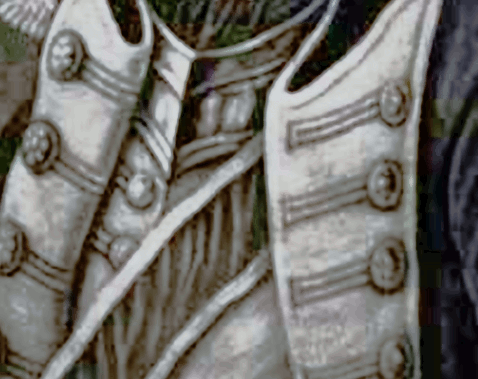
Support for the
Patriots |
- New York City was a rowdy place and in the early days of Dutch settlement
of New Amsterdam, it was pretty much lawless.
- Little changed under British rule and it got worse after the Great Fire.
- Following the disaster, the British established a regime of strict martial law rather than returning to civilian administration.
- Under British rule there was no reconstruction and people
lived in squalor for years in huts and tents.
- The fire had long-term effects on the British occupation of the city.
|
A second “great” fire — though not nearly as great as the first one — destroyed another 54 houses and “several” — meaning at least three? — warehouses on the night of August 3, 1778.
(gothamcenter.org)
|
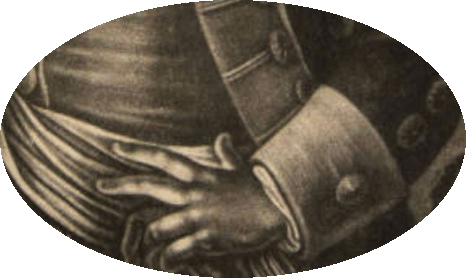
Masonic hand sign |
- To make matters worse, Major General James Robertson confiscated surviving uninhabited homes of known Patriots and assigned them to British officers.
- Churches, other than the state churches, Church of England, were converted into prisons, infirmaries, or barracks.
- Some of the common soldiers were billeted with civilian families.
- Crime and poor sanitation were persistent problems during
the British occupation, which did not end until they evacuated
the city on November 25, 1783.
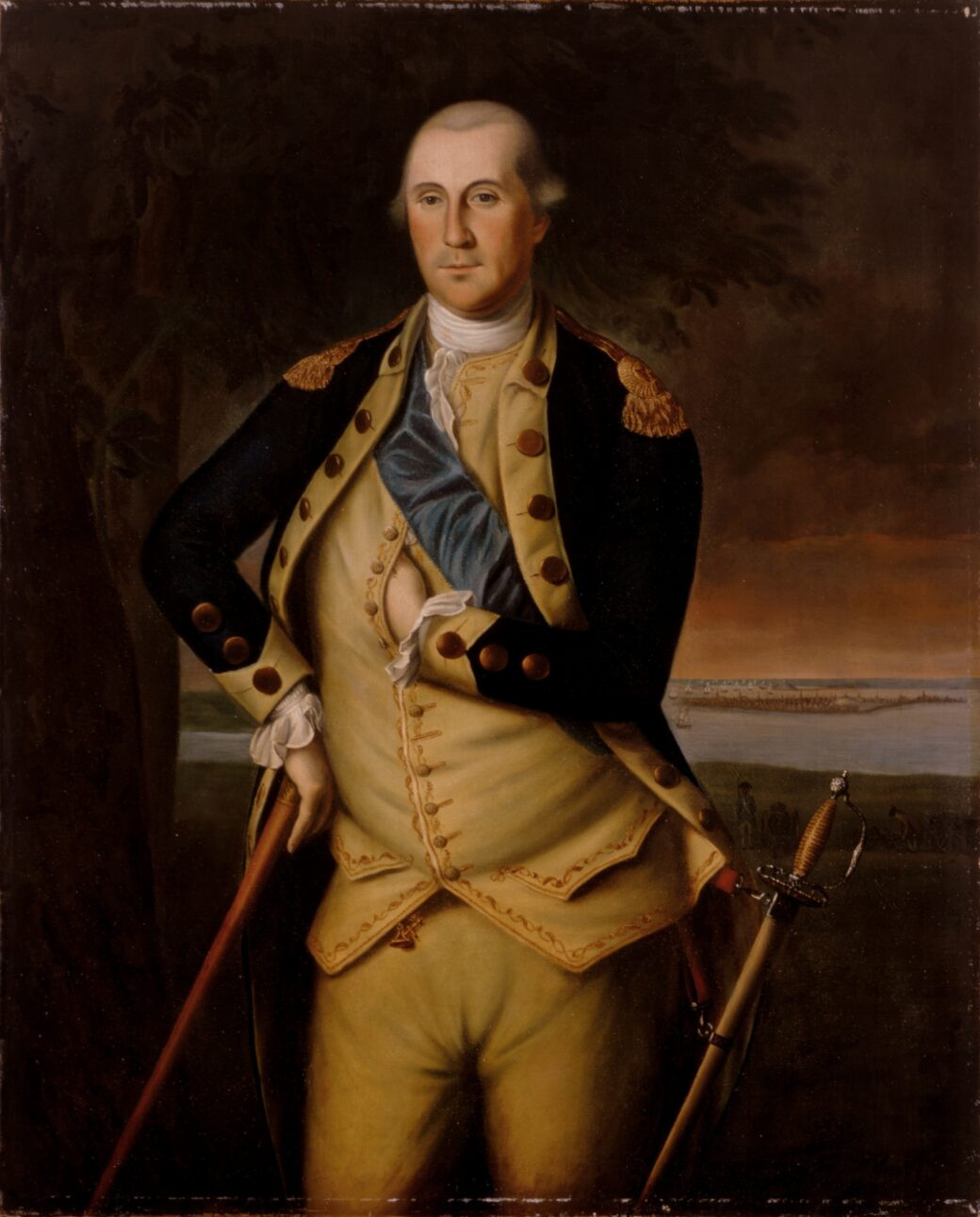
Charles Willson Peale - White House Collection
in Public domain
George Washington 1776
Masonic hidden hand |
|
- George Washington was a Freemason.
- He joined the Fredericksburg Lodge in Virginia in 1752
at age 20 as an Entered Apprentice.
- He advanced to Master Mason in 1753, and his Masonic ties continued throughout his life, with Masonic rites performed at his funeral.
|
He remained a member for his entire life. Later, he became an honorary member of Alexandria Lodge No. 39 and agreed to be its charter master.
The George Washington Masonic National Memorial was built in Alexandria, Virginia, as a memorial to him.
(Assistant)
|
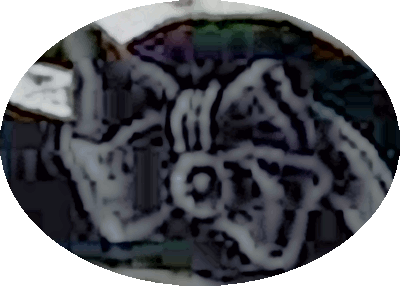
It's not a feather,
it's a bow |
- The idea that American colonists burned New York City under orders from George Washington offers a very different picture of both Washington and the rebellion.
- In addition, the letter highlights the dire situation faced by the American forces
and why entire regiments abandoned the army and returned home.

Gilbert Stuart -
Public Doman
George Washington in
Philadelphia |
- The artist originally painted Washington wearing a
traditional black/dark navy suit but changed it to brown to
give him a more 'down home' feeling.
- Even if Washington did not specifically order the arson
in defiance of the Second Continental Congress, his request to
burn the city created a lack of confidence in his troops, and
despair at the situation.
- Perhaps we should change the way we teach about Washington and colonial defiance of the British.
|
A brown suit signifies a mix of sophistication, approachability, and confidence, moving away from the extreme formality of black or navy. It suggests a person who is trustworthy and grounded, while also being stylish and willing to deviate from tradition.
(Assistant)
|
- Washington chose his words carefully, but he later made it clear that his wish before retreating was to see New York City, the
2nd-largest urban center in the
13 Colonies, with a population of around 25,000, 'laid in
ashes.'
- Then he urged Congress that it should be a
'profound secret.'
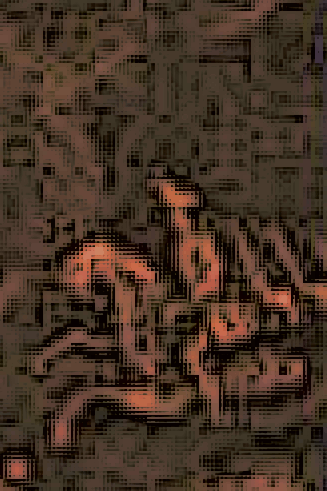
One if by land |
- Sources would later claim the blaze’s unusual spread was caused by burning shingles carried by the wind.
- Rebels and Loyalists alike agreed that the fire jumped around, skipping whole city blocks.
- But to a soldier who witnessed the event, the flames looked like two distinct fires with separate ignition points.
-
Firefighter John Baltus Dash testified that the fire broke out in two places at once, far too soon for the wind to have communicated flaming brands from one place to the other.
- Dash also found fire buckets with their handles cut and saw British soldiers arrest several people who had concealed combustible materials under their clothes.
|
British officers and their Loyalist allies reported these facts and other evidence through their channels of news and intelligence, arguing that the
rebels — including General George Washington himself — were incendiaries who had perpetrated a villainous and atrocious act.
(gothamcenter.org)
|
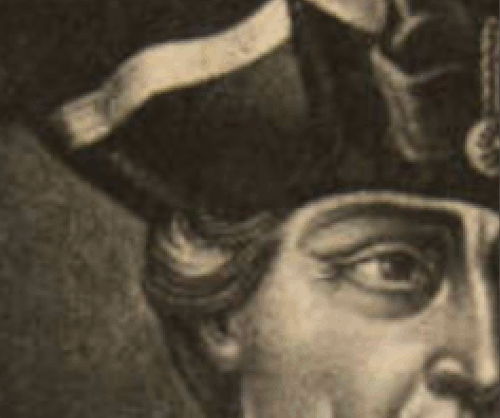
Mystery |
- For nearly 250 years, the mystery of how the fire started has gone unsolved and, for the most part, unexamined.
- The fire's origins remained a mystery despite the British
investigations in 1776 and 1783.
- To understand the damning speculation, we must examine the events that lead up to that moment, from the first outrages against the British by American colonists to the first sparks of the Revolutionary War.
- Why did New York get caught up so early in the war and what were the circumstances that led to the city falling into British hands?
|
The story of Americans participating in the burning of New York has been suppressed in all American histories from that day to this.
(William Henry Shelton, 1929)
|
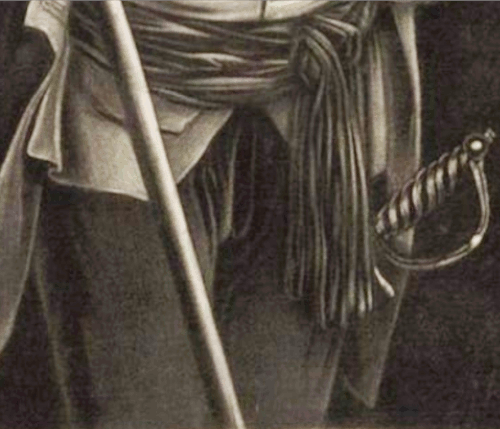
Suppressed |
- Most Americans never heard this story, then or since, because
it was not made known.
- Intelligence reports from Washington, the Continental Congress, and
rebel newspapers suppressed any suggestion that rebels might have burned New York City.
-
John Sloss Hobart, a member of the New York Provincial Congress, wrote that
British soldiers had been promised 'plunder of the town' in
order to display their views.
- They called it an accident or suggested that the British soldiers themselves had done the job.
- Since then, American historians, relying on these rebel accounts, played down the story of the Great Fire or turned it into a British atrocity.
|
Americans were, in other words, encouraged to remember the Great Fire in a certain way. They developed a myth of American exceptionalism and tried to make New York City’s experience as a British garrison fit within that myth.
(gothamcenter.org)
|
|
From hot to cold |
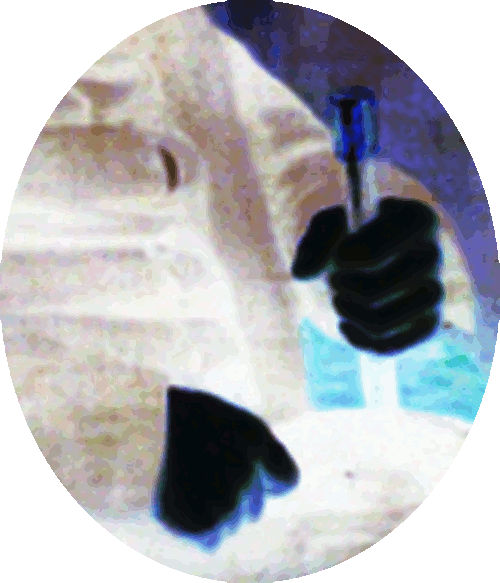
Valley Forge |
- Next George Washington brought his army to Valley Forge and
displayed his leadership in preserving the Continental Army during the harsh winter of 1777-1778, despite immense suffering from disease, starvation, and lack of supplies.
.jpg)
John Trumbull, Public domain, via Wikimedia Commons
George Washington
1780 |
- Washington was instrumental in reforming the army by securing supplies and, with the help of Baron von Steuben,
a Prussian-born army officer, transforming the troops into a disciplined fighting force through intense training.
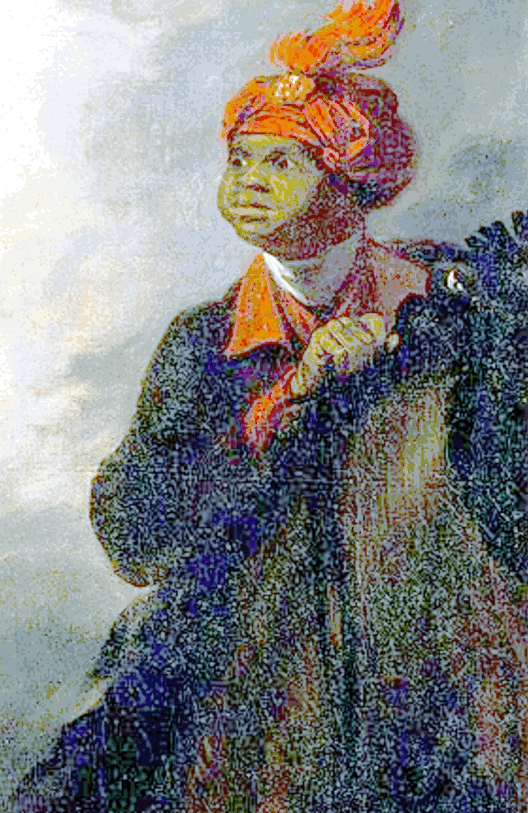
Enslaved personal
servant |
-
In this portrait of George Washington, he is shown standing on a bluff above the Hudson River with his enslaved personal servant, William
'Billy' Lee, attending his horse.
- Although, you have to
admit, Billy looks rather well off.
|
Larry Kramer's recent novel, The American People: Volume 1: A Search for My Heart, has got tongues wagging again about which great men in American history were gay. In interviews, as well as in the book, Kramer has claimed that many of the founders, including George Washington, were gay.
(Thomas A. Foster)
|
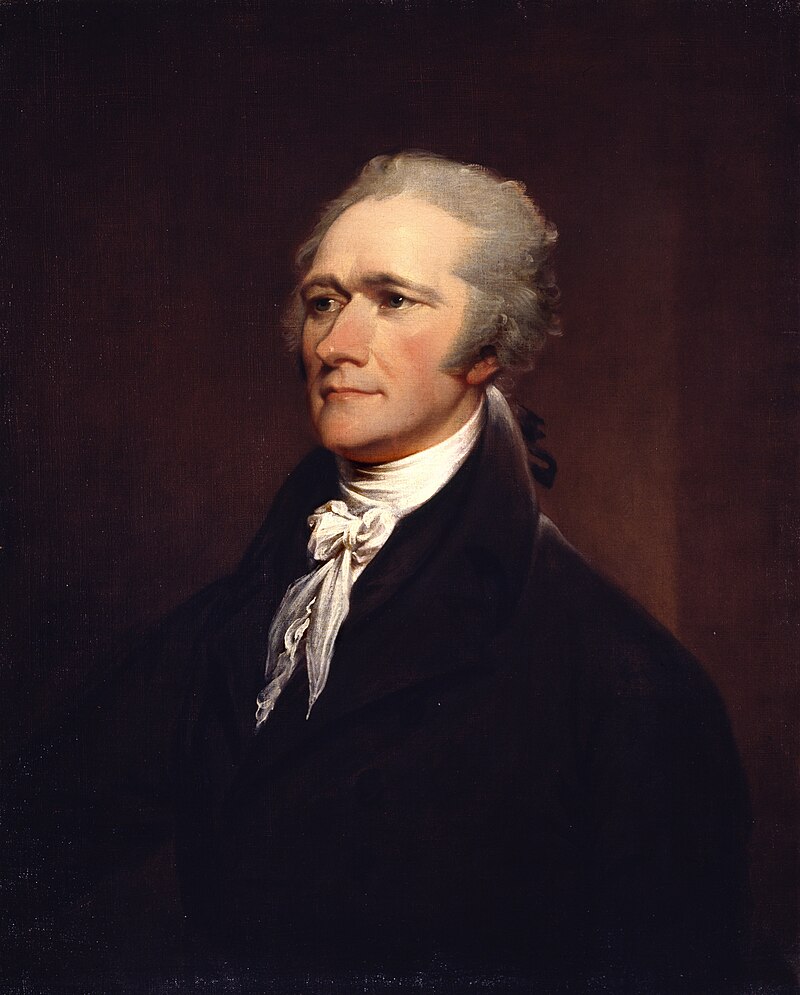
John Trumbull, Public domain, via Wikimedia Commons
Alexander Hamilton
1794 |
- Both Hamilton and Franklin Pierce, our 14th president
were gay, but until letters were unsurfaced between Hamilton
and Washington, we never knew our 1st president was gay too.
- It was widely known in letters that Washington sent to
Alexander Hamilton, that they had a sexual relationship.
-
Hamilton and John Laurens were said to share a bunk at times
and his son censored his letters before they were published.
-
During the Revolutionary War, Marquis de Lafayette also
exchanged love letters with Washington.
- Washington also
had a penchant for hiring gay military leaders and chiefs of
staff.
- Benjamin Franklin showed great empathy for
homosexuals during that time.
- Youtube -
George Washington Was Gay.
|
Cold in my professions, warm in my friendships, I
wish, my Dear Laurens, it might be in my power, by
action rather than words, to convince you that I love
you. I shall only tell you that ’till you bade us
Adieu, I hardly knew the value you had taught my heart
to set upon you....You should not have taken advantage
of my sensibility to steal into my affections without
my consent. But as you have done it and as we are
generally indulgent to those we love, I shall not
scruple to pardon the fraud you have committed.
(Alexander Hamilton in letter to fellow officer, John
Laurens)
|

Charles Willson Peale, Public domain, via Wikimedia Commons
Friedrich Wilhelm Ludolf Gerhard Augustin Louis Freiherr von Steuben
1780 |
- Washington persuaded Congress to reform the supply system to address the crippling shortages of food, uniforms, and medical supplies that plagued the troops.
- He hired Baron von Steuben (1730-1794), who trained the soldiers in new military skills
and drilled them to fight as a unified army.
- Steuben, who
was appalled by the state of the U.S. forces, also implemented reforms in camp layout, sanitation, and organization
which made the army more professional and efficient.
- He wrote
Regulations for the Order and Discipline of the Troops of the United States
(Blue Book), which remained the army's drill manual for decades, and continues to influence modern U.S. army manuals.

European flair |
- Born
into a military family, Steuben was exposed to war his entire
childhood.
- His verbose name paid tribute to the exalted men who stood witness as Steuben’s godfathers: Ludolf von Luderitz, royal forester in Magdeburg; Gerhard Cornelius von Walrave, colonel of artillery and a Catholic of Dutch birth who would become the highest-ranking engineer officer in the entire Prussian army; and Augustin von Steuben, the younger Steuben’s paternal grandfather.
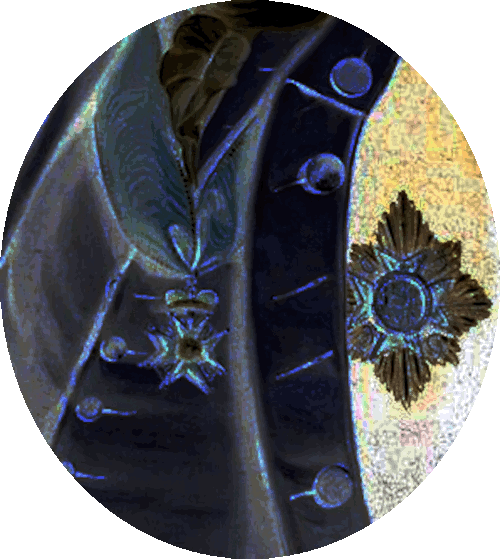
Wilhelm Institute |
- A fourth sponsor wasn’t present, but his name became the one that Steuben was most commonly known by.
- That man was Friedrich Wilhelm I, king of Prussia.
- His agreement to be listed as a godfather was a testament to the standing of the Steuben family in the eyes of the Hohenzollern dynasty, which ruled the land that would eventually become Germany from 1415 to 1918.
- The Kaiser Wilhelm Gesellschaft (KWG) was founded in 1911 as a research institution outside the university system in order to advance the interests of German state and capital through the development of scientific knowledge relevant to industrial and military application.
|
The Kaiser Wilhelm Society for the Advancement of Science was a German scientific institution established in the German Empire in 1911. Its functions were taken over by the Max Planck Society. The Kaiser Wilhelm Society was an umbrella organisation for many institutes, testing stations, and research units created under its authority.
(Wikipedia)
|

Studio of Thomas Heinrich Voigt, Public domain, via Wikimedia Commons
Kaiser Wilhelm II of Germany
- 1902
|
- Kaiser Wilhell II
(1859-1941) or Frederick William Victor Albert in English, was
born on January 27, 1859.
- He was the last German Emperor and King of Prussia from 1888 until his abdication in 1918.
- His fall from power marked the end of the German Empire as well as the Hohenzollern dynasty's 500-year rule over Prussia and its predecessor state, Brandenburg.

Kaiser Wilhelm bling |
- Kaiser II dismissed longtime Chancellor Otto von Bismarck and assumed direct control over his nation's policies, embarking on a
'New Course' (NWO) to cement Germany's status as a leading world power.
|
Otto Von Bismarck as Fred
Trump Sr.
|
Otto Von Bismarck
1815-1898
4/1 7/30
King of Prussia |
Frederick Christ Trump Sr.
1905-1999
10/11
6/25
Real estates |
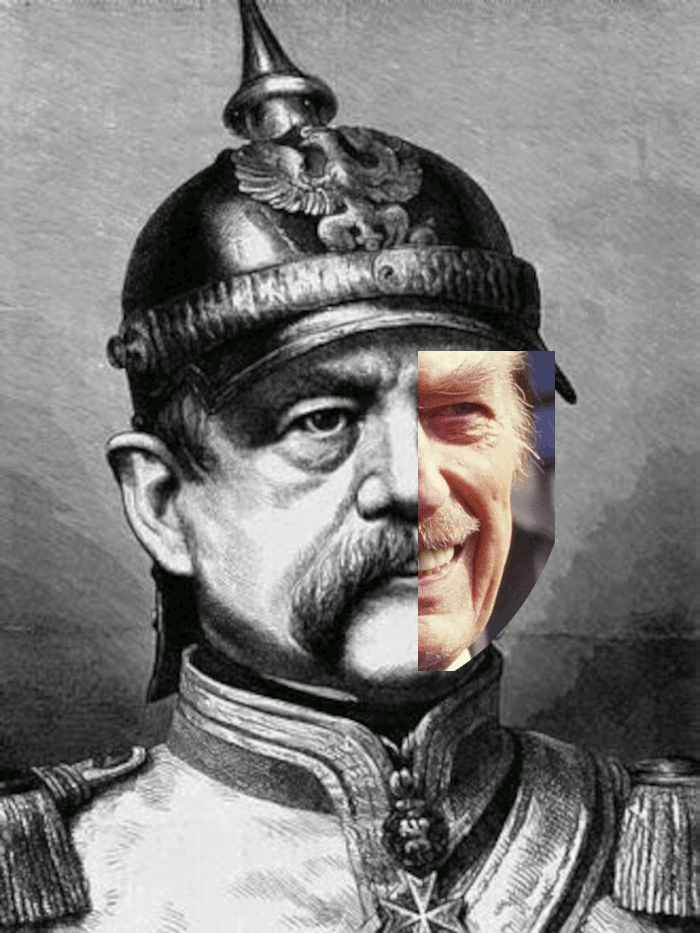 |
 |
|
Iron Chancellor |
- Otto von Bismarck as Minister President of Prussia, shown wearing insignia of a knight of the Johanniterorden, 1858.
- However, Wilhelm often undermined such progress by making tactless and threatening statements towards other countries without first consulting his ministers.
- Likewise, his regime did much to alienate itself from other great powers.
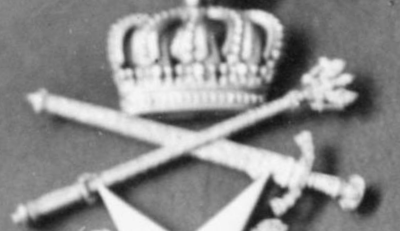
Devil's crown |
- Wilhelm was the son of Prince Frederick William and Victoria, Princess Royal.
- In March 1888, Wilhelm's father, Frederick William, ascended the German and Prussian thrones as Frederick III.
- Frederick died just 99 days later, and his son succeeded him as Wilhelm II.
- Through his mother, he was the eldest of the 42 grandchildren of
Queen Victoria of the United Kingdom and what
they won't admit, Nathan Rothschild.
.png)
Emil Rothe, CC BY-SA 4.0 , via Wikimedia Commons
Prince Wilhelm as a student at the age of 18 in Kassel 1877 |
- By the second decade of the 20th-century, Germany could rely only on significantly weaker nations such as Austria-Hungary and the declining Ottoman Empire as allies.
- Losing the support of his country's military and many of his subjects, Wilhelm was forced to abdicate during the German Revolution of 1918–1919 which converted Germany into an unstable democratic state known as the Weimar Republic.
|
Despite strengthening Germany's position as a great power by building a powerful navy as well as promoting scientific innovation within its borders, Kaiser Wilhelm's public pronouncements and erratic foreign policy greatly antagonized the international community and are considered by many to have contributed to the fall of the German Empire.
(Wikipedia)
|
- Scientists at the Kaiser Wilhelm Institute for Anthropology, Human Heredity and Eugenics
(KWIE), chief among them founding director Eugen Fischer, declared their ideological support for
Nazi racial policy as early as 1933 and actively promoted it through legislative collaboration and training for legal and medical.
- The KWIE developed into one of the world's most modern
research institutions of its field.
- The upturn of the KWIE from 1933 onward also became visible with the implementation of the plan for a new building which had been postponed time and again for years.
- The beginning boom of the arms industry meant that the
iron and steel industry was now able to provide financial
resources for the construction of a new institute building.
- Following the Nazi's seizure of power, the Kaiser-Wilhelm-Institut für Eisenforschung (KWIE) thrived due to the Nazi rearmament and the unsatiable
'hunger for iron' connected to this.
- Kaiser Wilhelm
Institute's factions were taken over by Max Planck Society.
|
The outbreak of World War II in 1939 was followed by an increase in extent and importance of war relevant research which had been assigned to the institute by various parts of the Wehrmacht. This resulted in close relations with the air force, the army and the navy, and, in the end, the KWIE was declared to be a „Wehrwirtschaftsbetrieb“ - an organisation relevant to the war economy.
(Max Planck Institute)
|
|
Kaiser
Wilhelm II as
Jared Kushner |
Friedrich Wilhelm Viktor Albert
1859-1941
1/27 6/4 |
Jared Corey Kushner
1981
1/10 |
 |
 |
Slumlord
|
- Jared Kushner is an American businessman and investor.
- He is the son-in-law of the president of the United States, Donald Trump,
head demon.
- He has faced accusations regarding his business dealings, particularly a large investment from Saudi Arabia, with critics alleging corruption and conflict of interest.
- Other accusations include pushing tenants out of apartment buildings through unlivable conditions, making questionable real estate deals with foreign investors, and promoting a controversial plan for Gaza.
- Kaiser Wilhelm II was the last German Emperor and King of Prussia, ruling from 1888 until his abdication in 1918, and is often associated with the militaristic policies that led to World War I.
|
Republican Chris Christie, who chaired Trump's first transition team, said Kushner committed "one of the most loathsome, disgusting crimes" he prosecuted. On December 23, 2020, President Trump issued a full and unconditional pardon to Kushner, his daughter's father-in-law, citing his record of "reform" and "charity".
(Wikipedia)
|
United States Navy, Public domain, via Wikimedia Commons
Tiffany Cross Medal of Honor
- Of course the military boys award themselves all kinds of bling, styled
after the Iron Cross, which is what they call it in Germany.
- A Medal of Honor recipient receives a special monthly pension, which is currently around $1,406.73.
- VALOUR is the British spelling of the word which is VALOR in
American.
|
The "Tiffany Cross" was a specific design for the U.S. Navy and Marine Corps Medal of Honor, created by Tiffany & Company in 1919 and awarded for combat heroism from 1919 until it was discontinued in 1942. This cross-shaped medal was intended to be given for actions involving "actual conflict with the enemy," while the older star design was for non-combat actions, a two-tiered system that caused confusion and was not widely issued. Only 28 individuals received this rare award, which was replaced by the current star design in 1942. (Assistant)
|
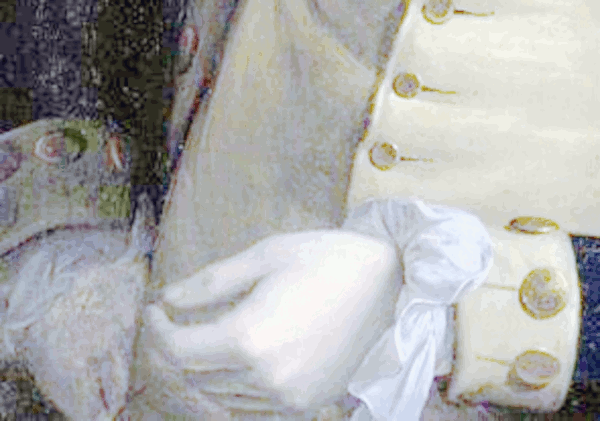
Masonic hidden hand |
- At age 14, he observed his father directing Prussian engineers in the 1744 siege of Prague.
- During the Seven Years’ War (1756-1763), Steuben served as an aide-de-camp (military assistant) to Frederick the Great (1712-1786), one of the most famous military commanders in Europe.
-
Steuben's career culminated in his attendance of Frederick's elite school for young military officers, after which he was abruptly discharged from the army in 1763, allegedly
after an encounter with a rival.
|
Later in life, he wrote about an “implacable enemy” who had apparently led to his firing, but historians are unsure of the exact circumstances of the dismissal.
(history.org)
|
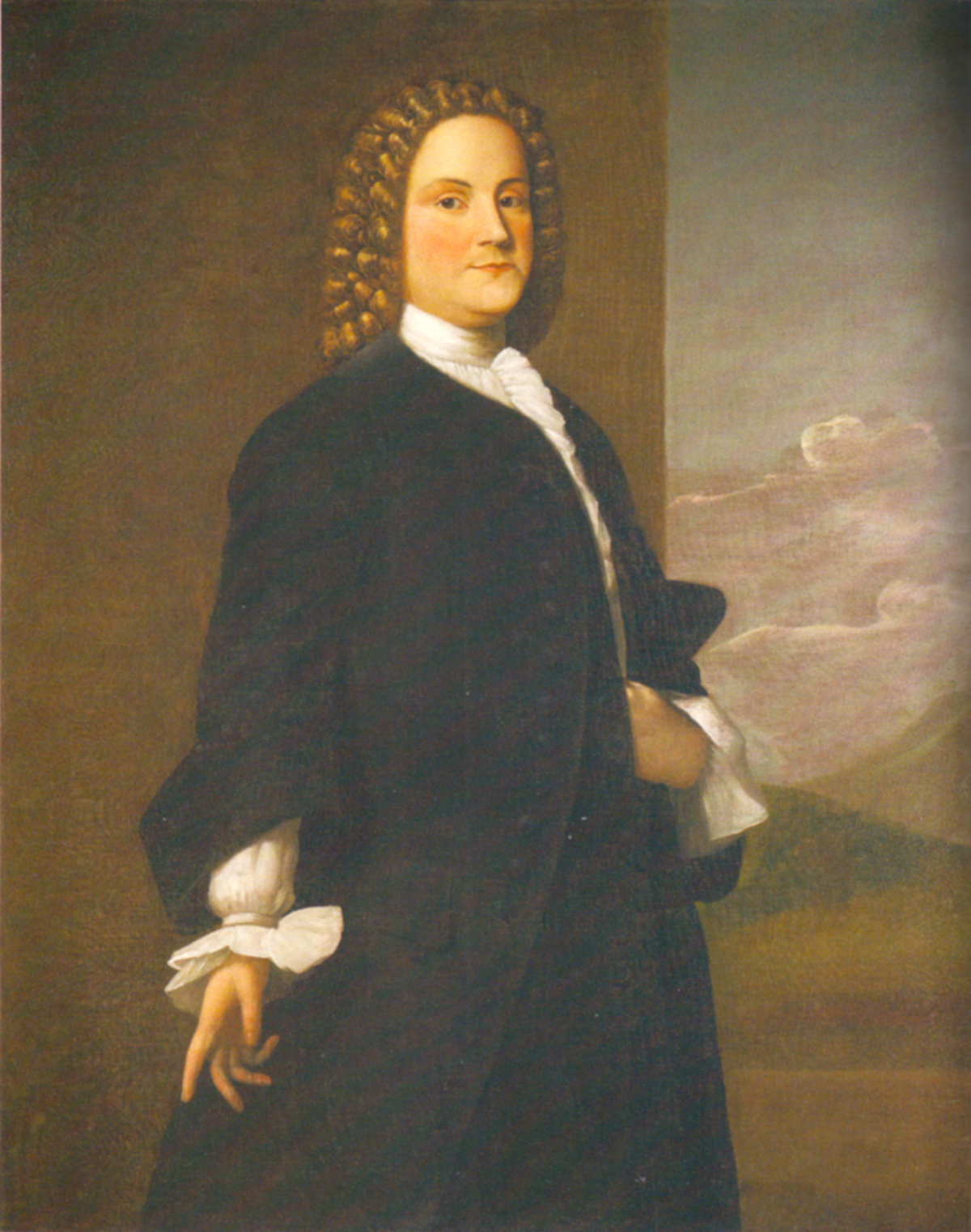
Robert Feke,
Public domain, via
Wikimedia Commons
Benjamin
Franklin c. 1746̵-1750
|
- There were rumors that the baron had been dismissed from the Prussian military for homosexuality.
-
After he was dismissed, Steuben bounced from job to job.
- Benjamin Franklin (1706-1790) met Steuben in Paris and befriended him.
- He was unimpressed by Franklin’s suggestion that he volunteer to help the American army, and tried instead to get another military job in the court at Baden.
- However his application stalled when an anonymous letter accused him of having
'taken familiarities' with young boys.
- It was Franklin who persuaded him to come to America in December 1777.
|
Historian William E. Benemann notes, there’s no
historical evidence that von Steuben was a pedophile.
But he was gay, and homosexuality was viewed as a
criminal aberration by many of his peers. “Rather than
stay and provide a defense, rather than call upon his
friends…to vouch for his reputation, von Steuben chose
to flee his homeland,” (history.com)
|

Franklin's Masonic hidden hand |
- In 1775, as the American Revolution had begun, Steuben saw a reduction in his salary and sought some form of military work.
- Benjamin Franklin recommended his military expertise to the Continental Congress
and he downplayed the rumors of his homosexuality.
- Franklin likely knew of the rumors and the reason that Steuben suddenly accepted an offer he’d
recently turned down,
however, he didn’t view his private life as relevant to his military qualifications.
-
Steuben was unable to find employment in peacetime Europe so he joined the U.S. war effort through mutual French contacts
he had made with U.S. diplomats, most notably ambassadors to France,
both Silas Deane and Benjamin Franklin.
|
Benjamin Franklin was a Freemason for 60 years, becoming a member in 1731 in Philadelphia
at St. John's Lodge and later serving as the Grand Master of Pennsylvania in 1734. He was deeply involved in Masonic activities throughout his life and was also a member of a prominent lodge in France, La Loge des Neuf Soeurs (The Lodge of Nine Muses), which helped him secure French support during the American Revolution.
(Assistant)
|
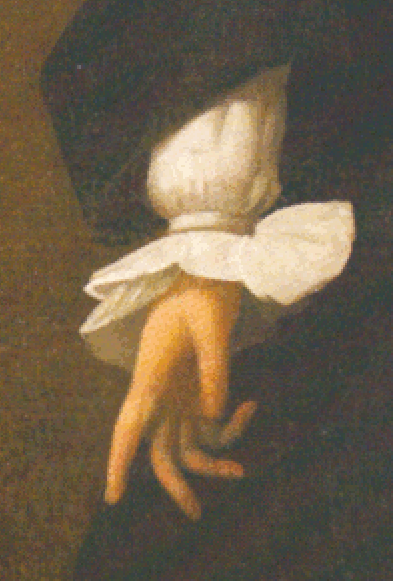
Ambassador to France |
- Steuben arrived in America with the understanding that the Continental Congress could not guarantee payment for his service.
- He agreed to serve without a rank or immediate salary, asking only for his expenses to be covered and future compensation if the American colonies won their independence.
- Steuben relied on generous friends to cover his travel, food, and equipment expenses during the war.
- Due to his military exploits, and his willingness to serve the Americans without compensation, Steuben made a positive impression on both General George Washington
and Congress.
- Washington quickly appointed him as temporary Inspector General of the Continental Army.
|
Steuben’s bonds with Frederick the Great (who was likely gay), and Frederick’s almost certainly gay brother Prince Henry (1726-1802), meant that he lived and worked in an environment where some same-sex relationships were open secrets. In Europe and in the United States, attitudes towards same-sex relationships varied widely. Discretion remained a necessity, however, as even a whisper of same-sex attraction could destroy a person’s reputation. (amrevmuseum.org)
|
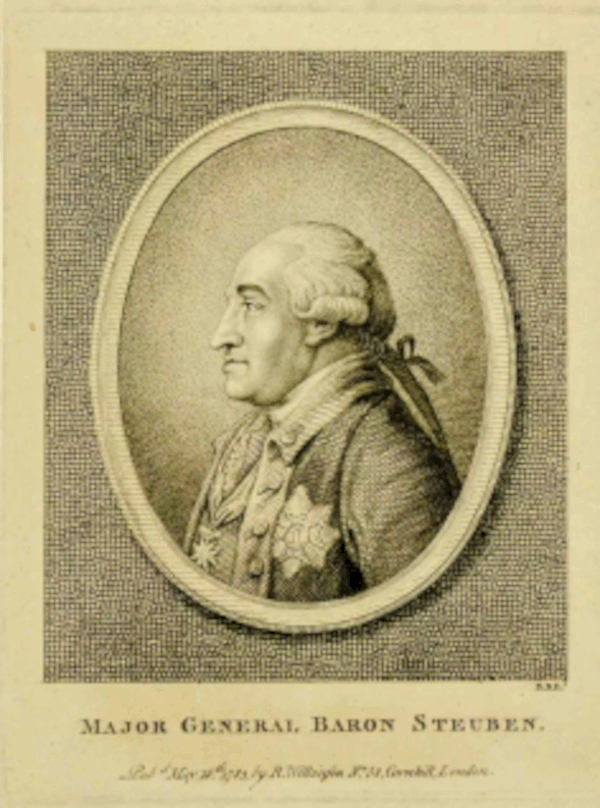
Museum of the
American Revolution
1779 |
- Steuben also addressed widespread administrative waste and graft, helping save desperately needed supplies and funds.
- As these reforms began reaping rewards on the battlefield, in 1778, Congress, on Washington's recommendation, commissioned Steuben to the position of Inspector General with the rank of major general.
-
Baron von Steuben spoke and wrote in both German and French but needed a translator to
understand English and a secretary to help him with
communication with his officers.
- He signed an oath of
allegiance to the United States and not long after, Washington
ordered all officers of the army to sign an oath.
|
Baron von Steuben’s sexuality has long puzzled historians and researchers. Steuben never married and his connection to likely gay members of the Prussian royal family, as well as his affectionate letters to his Revolutionary War aides-de-camp William North and Benjamin Walker, provide circumstantial evidence that he might have been gay. (amrevmuseum.org)
|

Washington's chief
of staff
Finger
pinch |
- Steuben served the remainder of the war as Washington's chief
of staff and was one of his most trusted advisors.
- The effect of Steuben's training was most obvious during the battle of Monmouth
in June 1778, when American forces, who had begun the retreat under orders from Charles Lee, rallied against the British on Washington's arrival.
- He also commanded a division at The Battle of Yorktown, and was a military planner to Washington following the war.
|
Von Steuben is believed by some historians to have been openly homosexual by 18th century standards. (newyorkalmanack.com)
|

Noble and wealthy
act |
- In 1780, Steuben was elected a member of the
American Philosophical Society, a learned society that included many of the nation's most prominent Founding Fathers.
- After the war
ended in 1783, Steuben was
granted U.S. citizenship.
- Longing to be seen as noble and wealthy, Steuben’s extravagant spending brought financial hardship.
- He spent the remaining years of his life seeking monetary
support and a military pension.
|
Steuben’s charming and charismatic behavior endeared him to his fellow soldiers and friends but his close and cherished relationships with men caused people to wonder about his sexuality. (newyorkalmanack.com)
|
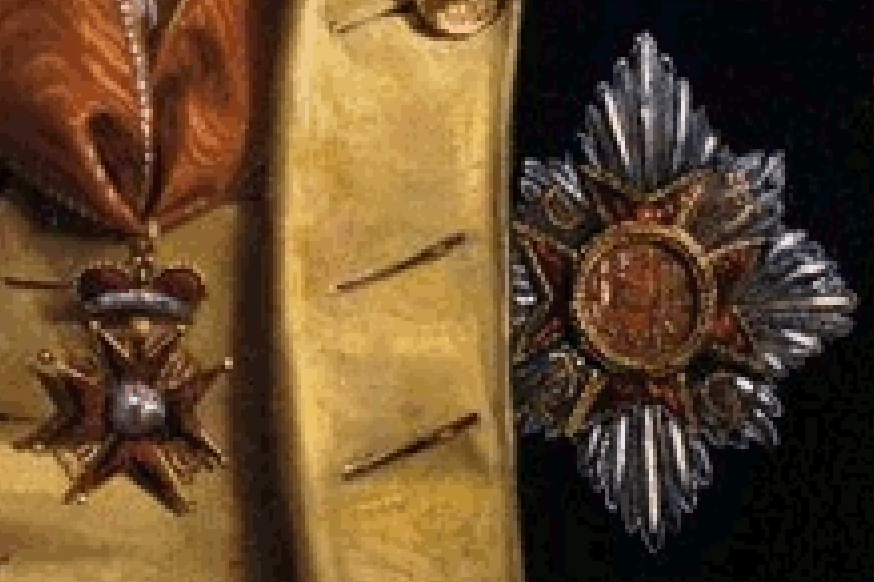
Wartime
contributions |
- Trying to maintain a façade of nobility and wealth, Steuben spent carelessly and always asked for more money.
- By the war’s end, he could barely cover his living expenses, let alone pay his staff.
- Steuben sent letters to powerful politicians and businesspeople hoping they could help his fight for compensation and a pension
and the United States Congress awarded Steuben a substantial annual pension of $2,500.
|
Baron von Steuben was a Freemason. He became a Mason in a Prussian military lodge called Blazing Star and later became a member of Holland Lodge and Trinity Lodge in New York after coming to America. Notable associate: He signed a letter from Holland Lodge to George Washington in 1789, granting the first President honorary membership in the lodge.
The Baron Steuben Lodge #264
is located at 5559 Lee Center-Taberg Road
Lee Center, New York.
(Assistant)
|

Chief witness
David Grim in New
York fire in 1776
also carried a gold
tipped walking stick |
- As a Prussian military officer, Steuben preferred to carry a
an elegant gold-tipped walking stick instead of a sword
because he liked the air of authority and refinement it commanded.
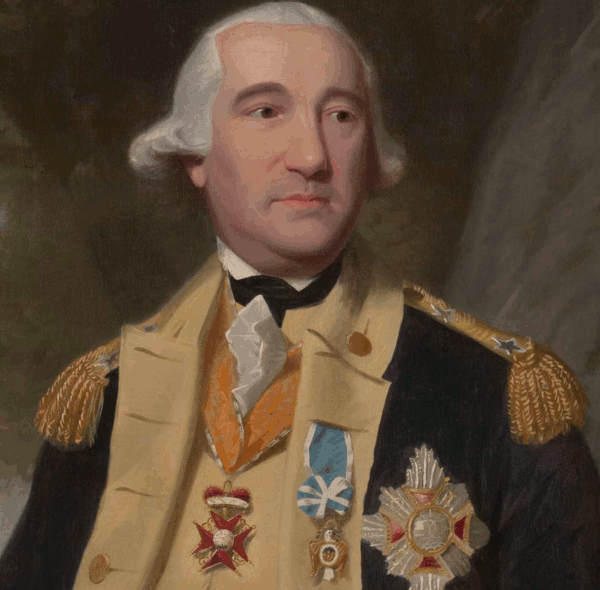
The German Element in the War of American Independence
Cross and star
of the Order of
Fidelity
|
- Congress gave Steuben a life annuity and New York State deeded him a parcel of land in appreciation for his wartime contributions.
- He was later appointed a regent for what evolved into the University of the State of New York.
- Steuben wears his Continental Army uniform with the cross and star of the Order of Fidelity, rewards he received from a German prince in 1769.
- The rewards signified an elevation to a higher social status that Steuben longed for.

Wintered |
- Steuben summered on his land in a two-room log house until his death
there after suffering a stroke on November 28, 1794.
-
His secretary, John Mulligan (1774-1862), lived with him and the two spent their time reading and playing chess.
- Although in his will he requested an unmarked grave, in 1804, his remains were transferred to what is now known as the
'Sacred Grove.' where an 1870 monument marks Baron von Steuben's final resting place.
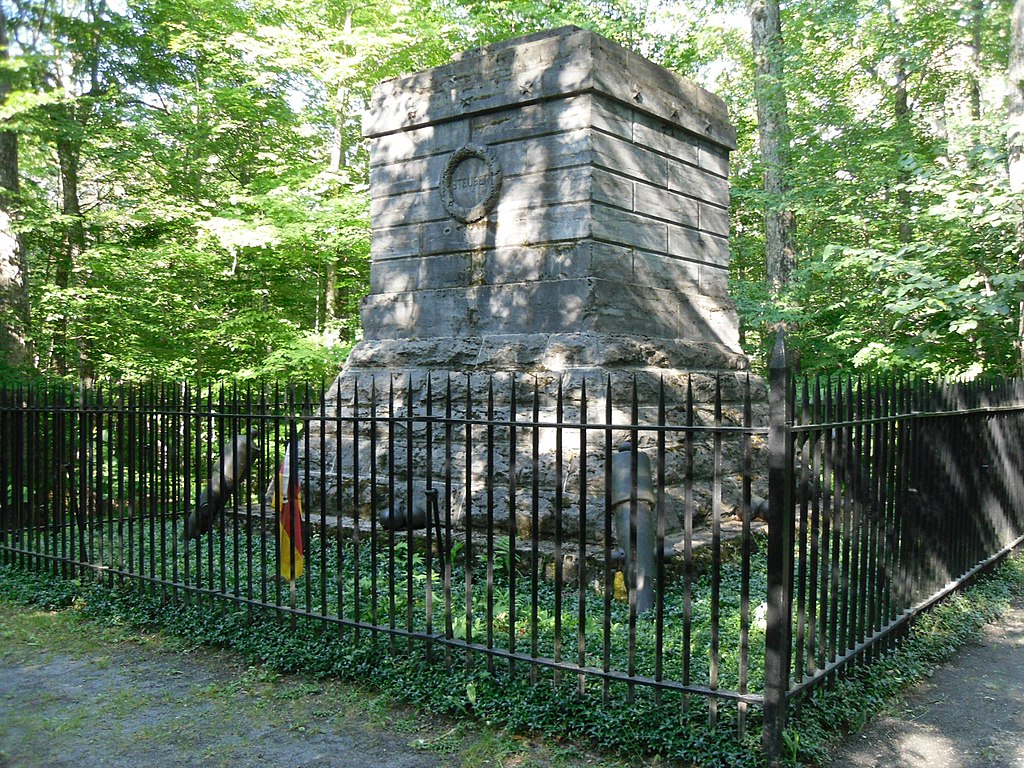
Doug Kerr from Upstate New York, CC BY-SA 2.0 , via Wikimedia Commons
Steuben Memorial State Historic Site |
- Steuben Memorial is managed in partnership with the National
Park Service at Fort Stanwix National Monument.
- It's located in the Mohawk Valley in the town of Steuben in Oneida County close to Rome,
New York.
- The land in this part of Oneida County was
part of a 16,000-acre land grant made to von Steuben for his services
building an army.
- His body was exhumed in 1824 by his side-de-camp and adopted son, Colonel Walker, who re-interred his remains at a spot nearby where
the monument was erected over the grave.
- Bits of cloth
from Steuben's uniform have been preserved and idolized at the local
lodge.
|
The original monument was replaced in 1870-1871 by the more imposing one which now marks the final resting place of this Patriot. It was financed by a State grant and by a public subscription, mainly by citizens of German decent in this country. (mastermason.com)
|
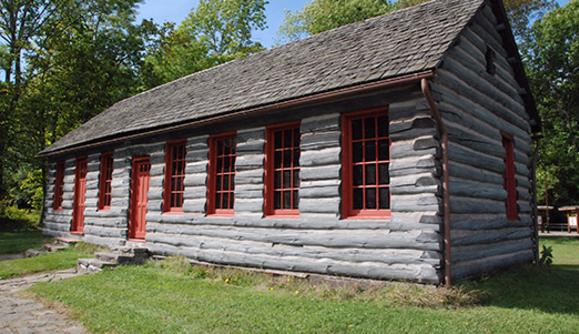
I LOVE NY Database
9941 Starr Hill Road
Remsen, NY
Reconstructed 2-room cabin |
- The site includes the memorial tomb and
log cabin reconstructed in 1937, as well as several smaller historic markers.
- The
memorial site also offers a picnic area, scenic views, tours, re-enactments, educational assistance, and
government demonstrations.
- It is a humble abode, very different from the lifestyle
Steuben enjoyed as a minor aristocrat in the European courts,
but on the other hand, it's an Adirondack summer cabin.
|
Generally, Von Steuben Day takes place in September in many cities throughout the United States during which participants march, dance, wear German costumes and play German music. (Answers)
|
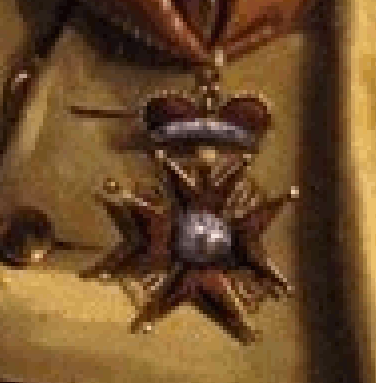
Drillmaster of the
American Revolution |
- The Steuben Memorial honors the 'Drillmaster of the American Revolution,' Baron von Steuben, whose valuable wartime services have been described as being second in importance only to those of George Washington.
- In 1777, Steuben volunteered his services to Benjamin Franklin to advise the ill-trained American army.
- At Valley Forge, he converted the ragged, starving army
into an effective fighting force.
|
His program greatly increased the morale and strengthened the army. He authored the "Blue Book," which still remains a basic reference for military training and organization. (newyorkalmanack.com)
|
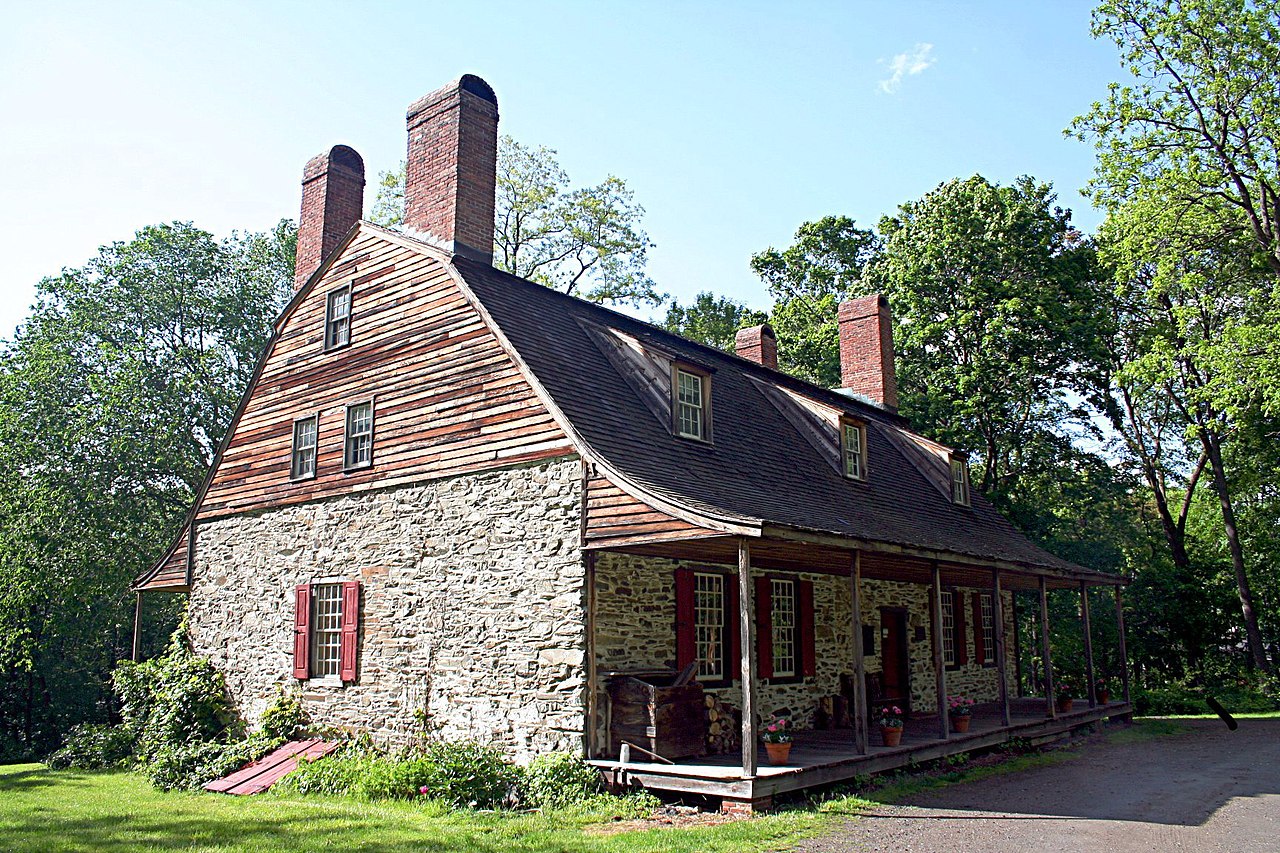
Rolf Müller, CC BY-SA 3.0 , via Wikimedia Commons
Mount Gulian historic manor house in Fishkill, New York |
- Mount Gulian is a reconstructed 18th-century Dutch manor house on the Hudson River in the town of Fishkill, New York.
- The original house served as the headquarters of Major General Friedrich Wilhelm von Steuben during the American Revolutionary War and was the place where the
Society of the Cincinnati was founded.
- The site is registered as a National Historic Landmark.
- It was part of the Rombout Patent which formally granted the land to Francis Rombout and Gulian Verplanck
and was issued by King James II of England on October 17,
1685.
- Very similar to Max Planck.
|
Archeological studies indicate intermittent Native
Americans presence since 6,000 BC. The land on which
the house stands was purchased from the Wappinger
Native Americans by two fur traders, Francis Rombout
and Gulian Verplanck on August 8, 1683. In exchange
for 85,000 acres (344 square kilometers) of land, they
paid about 1,250 dollars in goods. (Wikipedia)
|

Hudson valley |
- Gulian Verplanck II, a merchant from New York City, received 2,880 acres, 400 of which were on a slope overlooking the Hudson River.
- He named his estate Mount Gulian, in honor of his grandfather and had the first house on the site built between 1730 and 1740.
- The building was a small structure with an A-roof and
was later expanded.
- During this war, Gulian Verplanck's son Samuel stayed at the house,
and in early 1783, Major General Friedrich Wilhelm von Steuben made Mount Gulian his headquarters.
- At the same time, George Washington had his headquarters in Hasbrouck House, Newburgh on the opposite side of the Hudson River.
|
Archaeological evidence suggests it was probably enlarged around 1767 and the characteristic gambrel roof as well as two porches were added between this year and the American Revolutionary War. (Wikipedia)
|

Gulian ghost |
- While many have claimed to see or hear ghosts at the
Mount Gulian house, such stories are often dismissed, especially when the witness is alone.
- But in this case, the spectral figures were witnessed by not just one, but
4 people, a policeman and 3 firemen, simultaneously.
- The year was 1931, when the historic Mount Gulian house, located in Beacon, New York, was engulfed in flames.
- When the fire broke out, water was scarce, and the firefighters were unable to save either the wing or the house.
- As the flames consumed the structure, a wall of the wing collapsed, exposing an upstairs room.
|
To their astonishment, the men saw two figures in the room, dressed in attire from the 1700s. One figure, a man, was hunched over a writing desk, while the other, a woman, held a candle above his head, illuminating his work. As they peered through the flickering flames, it became clear that the man was hurriedly writing an important document. The atmosphere was tense; the woman repeatedly lowered the candle to provide better light as its flame dimmed. (sleepyhollowcountry.com)
|
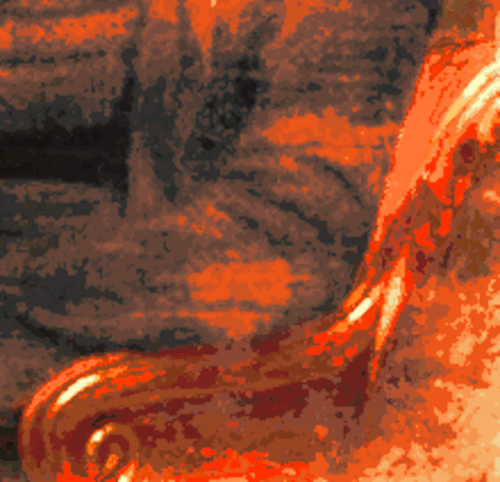
Burning man |
- This was no fleeting vision and amazingly, the policeman and the firemen reported watching the scene unfold for nearly half an hour, mesmerized.
- Then, with a sudden crash, the room was consumed by a shower of sparks and collapsing timbers. The vision vanished, and has never been seen again.
|
Who were these two figures? What was the man so urgently writing? The history and legends of the Verplanck family, who built the house, offer no answers. The mysterious figures were never seen before, and the question remains: were they spectral remnants of a secret room used long ago by Von Steuben? No one knows, and even the stone walls that survived the blaze have since been torn down. (sleepyhollowcountry.com)
|
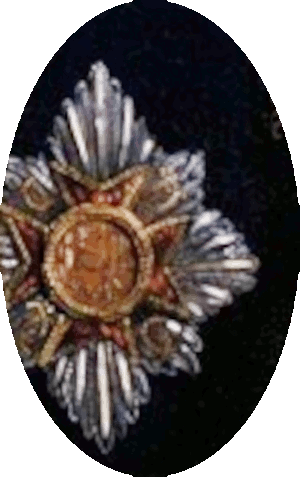
Hessian canon |
- William E. Ver Planck, in his 1893 genealogy study
The History of Abraham Isaacse Ver Planck, recounted that when Gulian Ver Planck acquired the land in 1730 to build Mount Gulian, the southeastern corner of the property bordered a meadow known as Spook Field.
- The name, as Ver Planck explained, stemmed from a local legend that the ghost of a murdered Hessian soldier, buried in that field during the Revolutionary War, was frequently seen wandering at dusk.
- Well, incidently, that could very well be Washington
Irving's 'Headless Horseman' in the Legend of Sleepy
Hollow who was apparently a Hessian soldier who had his
head blown off by a cannonball.
- Smashing pumpkins.
|
A 1914 article in House Beautiful magazine offered two versions of the Spook Field legend. The first mirrored the tale of the Hessian soldier, adding that his ghost “floats about in an unearthly fashion.” The article also introduced a second spectral figure, this time a Native American. (sleepyhollowcountry.com)
|

Half Moon |
- According to another story about Spook Field, in 1609, when Henry Hudson guided his ship, the
Half Moon, up the river that would later bear his name, he anchored at this very spot.
- As native canoes circled the European vessel, one of Hudson’s suspicious crew members noticed one particular Native American who seemed to be lurking nearby in his canoe.
- Fearing foul play, the crew member shot and killed him.
|
The ghost of this Native American was said to haunt the field at twilight, forever lingering where he met his untimely end. (Jim Logan)
|

DSPowell, CC BY-SA 4.0, via Wikimedia Commons
Steuben House
Jersey-Dutch
sandstone mansion
|
- Another fine home, the Steuben House is a noted example of Bergen Dutch
sandstone architecture.
- It's located at New Bridge Landing on the
Hackensack River in River Edge, in Bergen County, New Jersey,
on a 6-acre estate.
- The house was confiscated from British Loyalist Jan Zabriskie, and served as a military headquarters through much of the Revolutionary War.
- General George Washington made it his headquarters, from September 4 to 17
in 1780.
- Following the war, it was given to Major General Baron von Steuben, who occupied it from 1783 to 1788.
|
He is a Gentleman of Family, Merit and great experience… (Benjamin
Franklin)
|
|
General George
Washington as Baron
von Steuben |
George Washington
1732-1799
2/22
7/14 |
Friedrich Wilhelm von Steuben
1730-1794
9/17
11/28 |
 |
 |
|
Wilhelm type Institute |
-
Baron von Steuben became a dedicated American patriot and is considered the
'father of the United States military.'
|
He arrived at Valley Forge in February 1778, where he "fell in love" with the army and the "cause of liberty," transforming from a "conman" seeking a position into a true "believer" in the American cause. (Assistant)
|
|
David Grim as Baron
von Steuben |
David Grim
NY fire witness
|
Friedrich Wilhelm von Steuben
1730-1794
9/17
11/28 |
 |
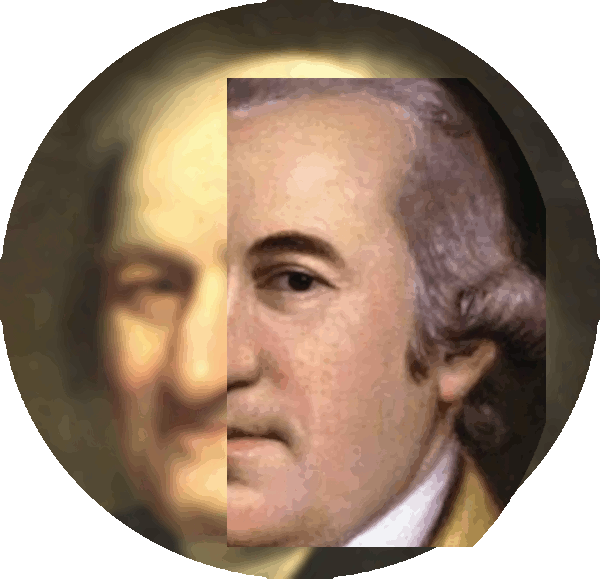 |
|
Ghosted |
-
The witness for the 1776 Great Fire, David Grim had good reasons to adhere to whatever flag New York was flying, since he had actively shaped New York City’s political and economic growth for decades.
-
He was an immigrant tavernkeeper and antiquarian, but he
became a wealthy leader of Federal New York.
- Grim did
his best to accumulate wealth and uphold the stability of the
new republic and he was one of the wealthiest 1%.
- He would wave whichever flag needed waving for his success.
|
Grim was a treasurer of the Lutheran Church (which had lost its building in the great Fire — Grim rented the ruin as a storehouse) and became president of the German Society in 1795. Grim held leadership positions in the Chamber of Commerce and the Mutual Assurance Company. He helped manage and owned shares in the Tontine Coffee House, a precursor to the New York Stock Exchange, and was president of the short-lived Bread Company, a monopolistic effort to break a bakers’ strike (until its building burned down). (gothamcenter.org)
|

Brown suit |
- After the war, Grim became a merchant and prominent patron in federal New York
and was active in Federalist politics so already he appeared
to move from a British Loyalist view to American Federalist.
- It was a confusing
time because many were British Loyalists, and many who
supported America
were also split between federalists and democratic republicans
so it was a complete triangulation of loyalties.
|
And so he left, as part of his legacy, an account of the Great Fire that was closer to Hobart’s propaganda than Dash’s testimony. Was it the truth, or was it Grim’s way of leaving his Loyalist past behind him? Had Grim spun a fairy tale?(gothamcenter.org)
|
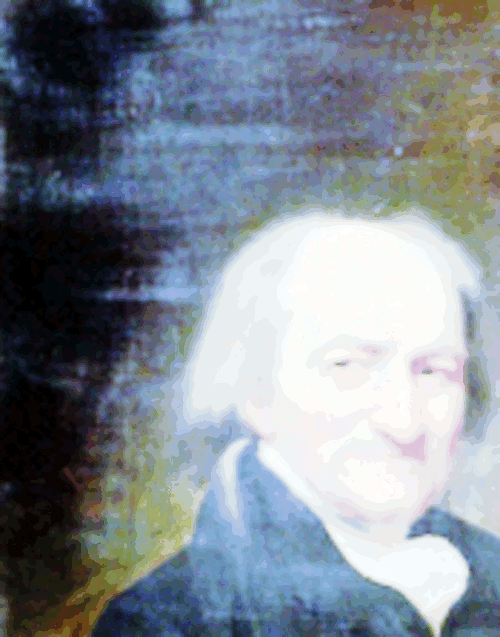
Haunted
David Grim’s Fairy Tale: The New York City Fire in Myth |
- Over the years Grim transitioned from Loyalist merchant to a
city father and his views of the Great Fire may have changed.
- His political sentiments had been British but became American.
- This did cause resentment because his brother was always a
Loyalist and when Grim traveled to Germany to relieve his
rheumatism, he was accused of being a Loyalist refugee like
his brother and the state came after him to repay his debts.
- We may never know with absolute certainty that the Great Fire was an accident, but Grim certainly made it harder for anyone to argue otherwise.
|
Grim’s shipping operations grew from there, but when the New York Chamber of Commerce passed a resolve in favor of the Jay Treaty in July 1795, “A REPUBLICAN” took to the Argus newspaper to attack the meeting’s attendees for their continued attachment to King George III. Most of them, “A Republican” acidly pointed out, weren’t “real Americans,” but were in fact “inimical to this country in the late war” or recent immigrants. The writer knew that David Grim (among others) had “resided within the British lines during the whole war.” (gothamcenter.org)
|
|
General George
Washington as Ethan
Allen |
George Washington
1732-1799
2/22
7/14 |
Ethan Allen
1738-1789
1/21
2/12
American poser |
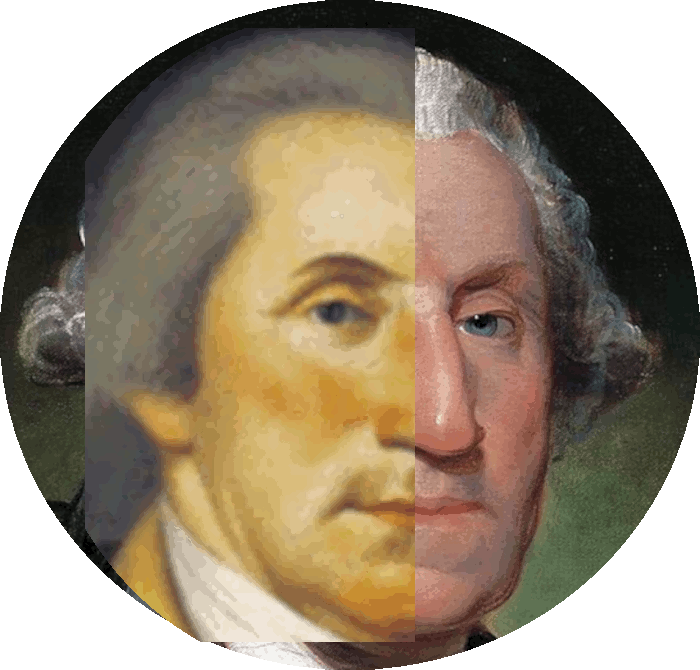 |
 |
|
Green Mountain Boys |
-
Baron von
Steuben with
Benedict Arnold
and George
Washington |
Friedrich Wilhelm von Steuben
1730-1794
9/17
11/28 |
Benedict Arnold
1741-1801
1/14 6/14 |

George Washington
1732-1799
2/22
7/14 |
\
Benedict Arnold
type
1741-1801
1/14 6/14 |
All these gentlemen look so similar
Brotherhood |
-
All their stuff burns down, not a good sign.

New York Morning Herald
April 18, 1840 |
|
|
With regard to military discipline,
I may safely say that no such thing existed in the Continental Army.
Baron von Steuben

|

